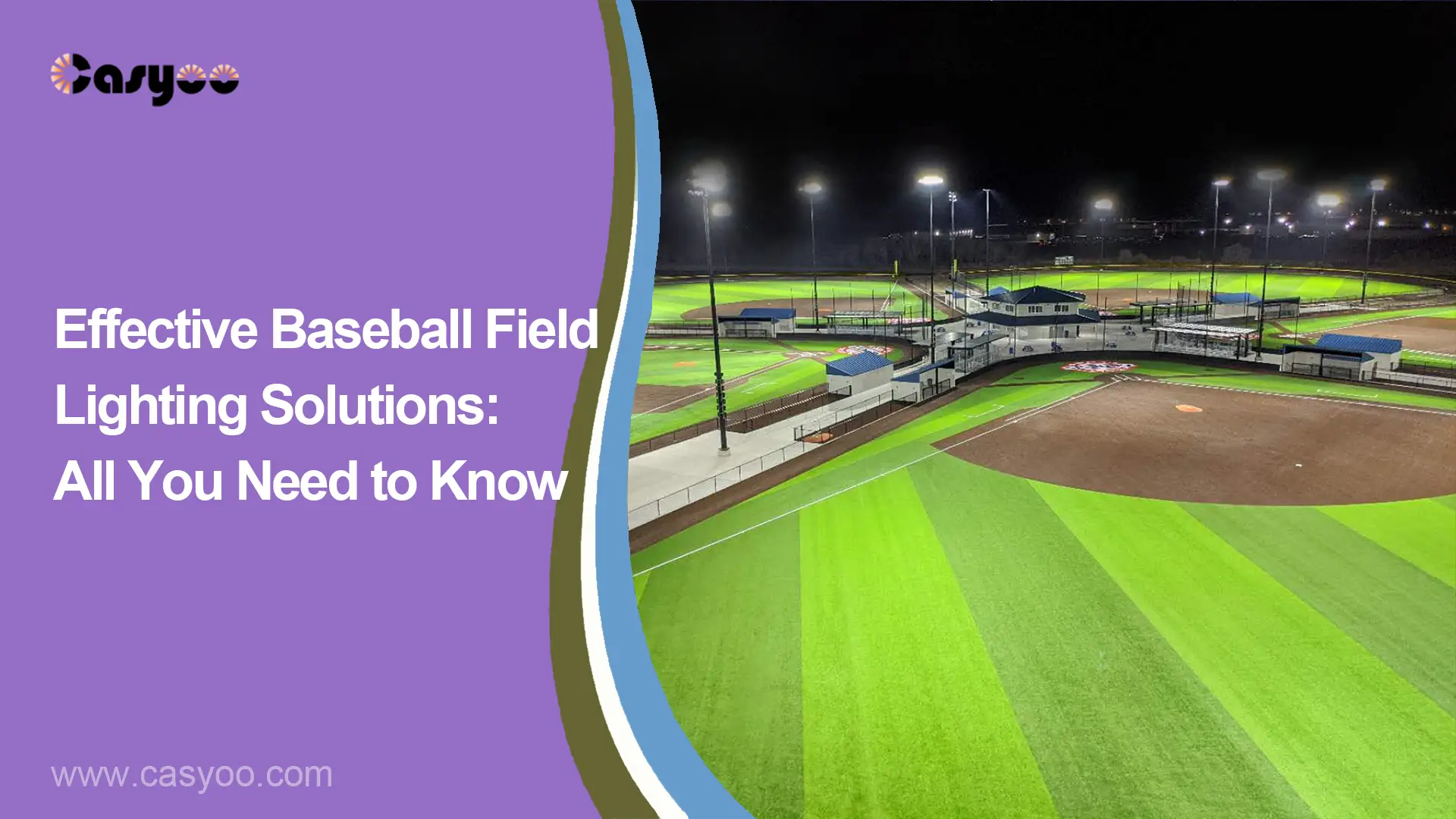To make your baseball field lighting appropriate instead of influencing the performance of the player, you need a carefully planned lighting solution. The first step is to get to know the dimensions of the field. After that, you would want to learn what the place and height of your lights should be. Read this passage, and you will get the overall information about a feasible lighting solution.
Dimensions of a baseball field
The baseball field is in the shape of a right-angled sector and consists of an infield and an outfield. The infield is a 90-feet (27.43-meter) square. In counterclockwise order, the four corners of the square are respectively called home, first, second, and third base. The home plate and pitcher’s plate are 60 feet (18.39 meters) apart. Devided by the grass line, the outfield is the remaining space of the right-angled sector. The left and right foul lines are more than 325 feet (99.06 m). The distance from the home base to the far-end wall in the middle is 400 feet (121.92 m). A range of no less than 60 feet (18.29 m) is the effective competition area. A backstop will be set up 60 feet (18.29 m) behind the home plate.
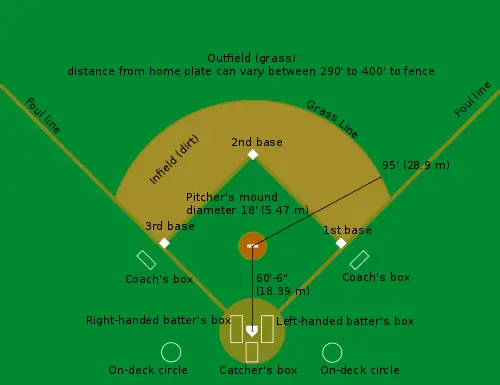
Standards of baseball field lighting
| Zone | Horizontal illuminance | Vertical illuminance | CCT(K) | CRI(Ra) | Glare(GR) | |||
| Average illuminance | Illuminance uniformity | Midfield camera | Infield cameras | Illuminance uniformity | ||||
| Ehave(FC) | U(MAX:MIN) | Evave(FC) | U(MAX:MIN) | |||||
| infield | 250 | 1.1:1 | 150 | 200 | 1.5:1 | 5000-5700 | ≥80 | ≤40 |
| midfield | 225 | 1.2:1 | 175 | 175 | ||||
| outfield | 200 | 1.3:1 | 200 | 150 | ||||
| Bullpen | 100 | 1.5:1 | / | / | ||||
| Audience | 125 | 2:1 | / | / | ||||
| 1fc≈10.76lx | ||||||||
Where should I set up the baseball field lights?
There are usually 6-8 light poles on the baseball field, and on the softball field, there should be more than 4 light poles. The light poles should be placed 20° outside the main viewing angles of the four base areas at A1, A2, B1, B2, C1, C2, C3, and C4 in the following picture. The gray areas are where the lights shouldn’t be set up. This placement can minimize the influence of glare on the players.
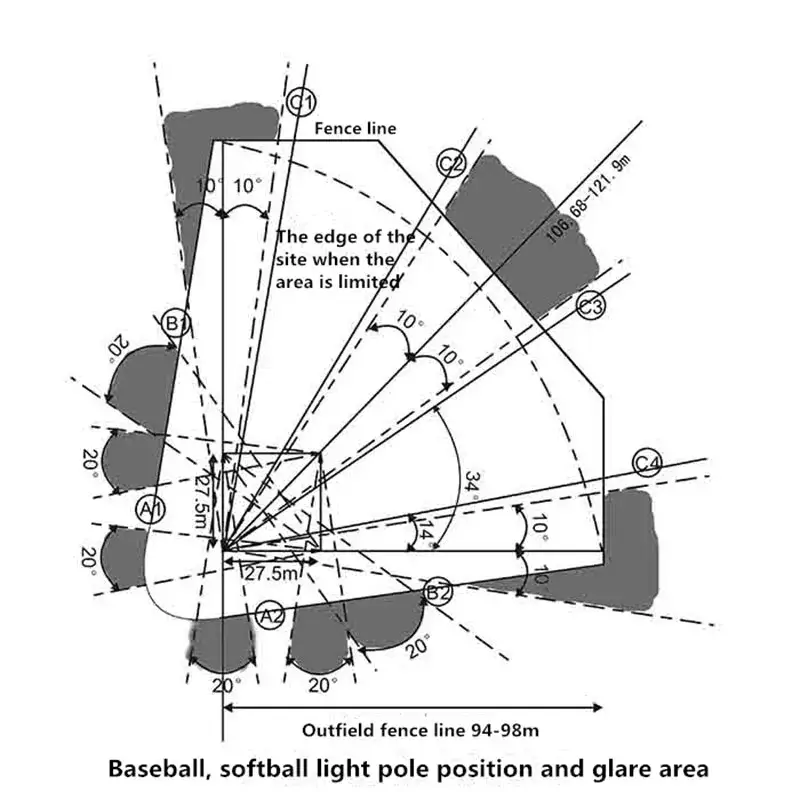
How high are baseball field lights?
The height of A, B, and C light poles is different and should be calculated according to the formula below.
A1 and A2: Ha≥27.43+0.5D1
Ha: height of A1 and A2, unit: m
D1: the distance between A1/A2 and the sideline, unit: m
B1 and B2: Hb≥D2/3
Hb: height of B1 and B2, unit: m
D2: Draw a straight line parallel to the sideline through the B1/B2 light pole. This straight line intersects with the center line of the field. The horizontal distance between this intersection and the B1/B2 light pole is d2, unit: m.
C1, C2, C3, and C4: Hc≥D3/2
Hc: height of C1, C2, C3, and C4, unit: m
D3: The farthest projection distance of C1, C2, C3, and C4, unit: m
Noted: The minimum installation height should not be less than 21.3m.
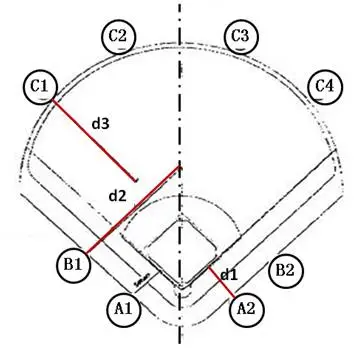
Other considerations of the solution
Illumination areas:
- The lights should not only illuminate the field but also ensure a certain lux level in the upper space of the field.
- To avoid the influence of glare on the audience and increase the visual comfort, the light should also cover 7 m outside the sideline.
- The illumination area should also include the off-field, the bullpen, and the dugout.
Brightness:
- Between the pitcher and the catcher, the light should be bright enough.
- Generally speaking, the average lux level of the infield should be 50% higher than the outfield.
Light source:
The baseball field is a large area that has demanding lighting requirements. To save the electricity costs of the lights in the long run, you should choose the most efficient type of lights. LED lights are more energy-efficient than typical MH or HPS lights. Besides, LED lights have other advantages like better heat dissipation ability, instant turning on, high CRI, long lifespan, etc. View Casyoo’s LED stadium lights with all the advantages you can imagine!
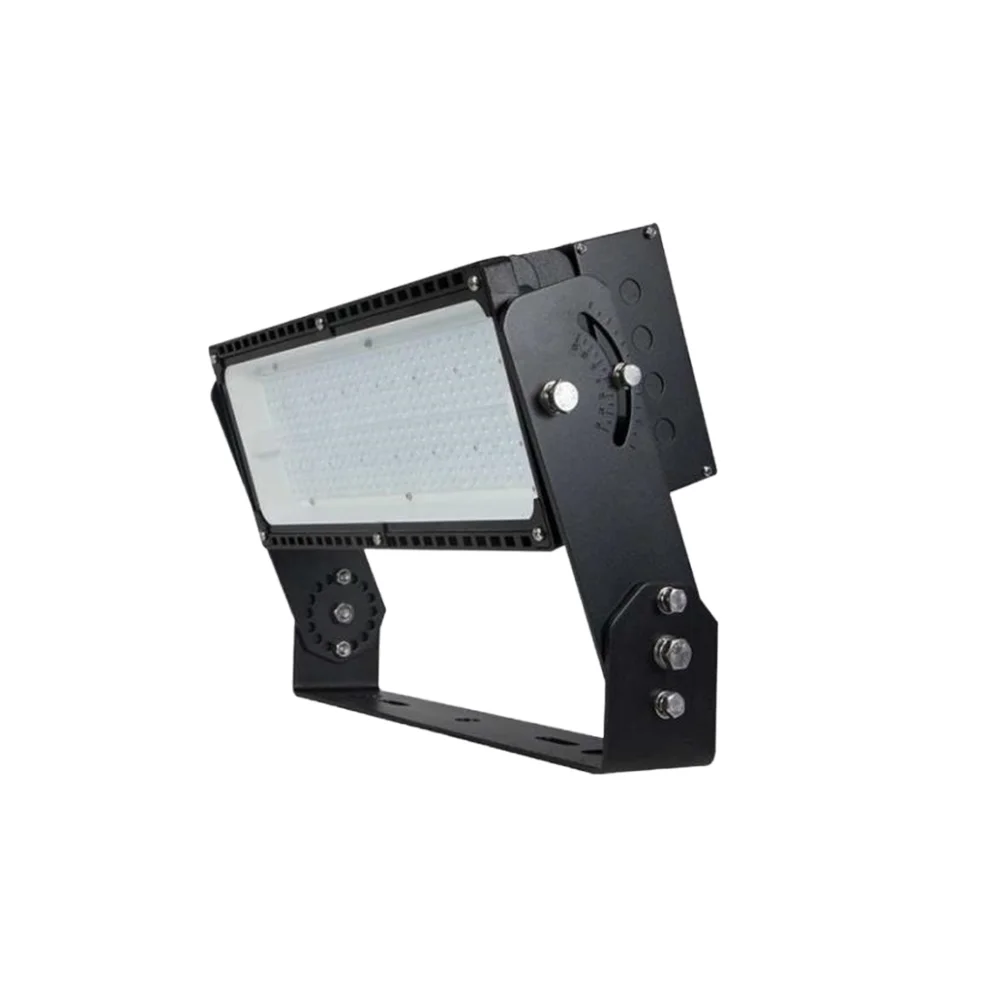
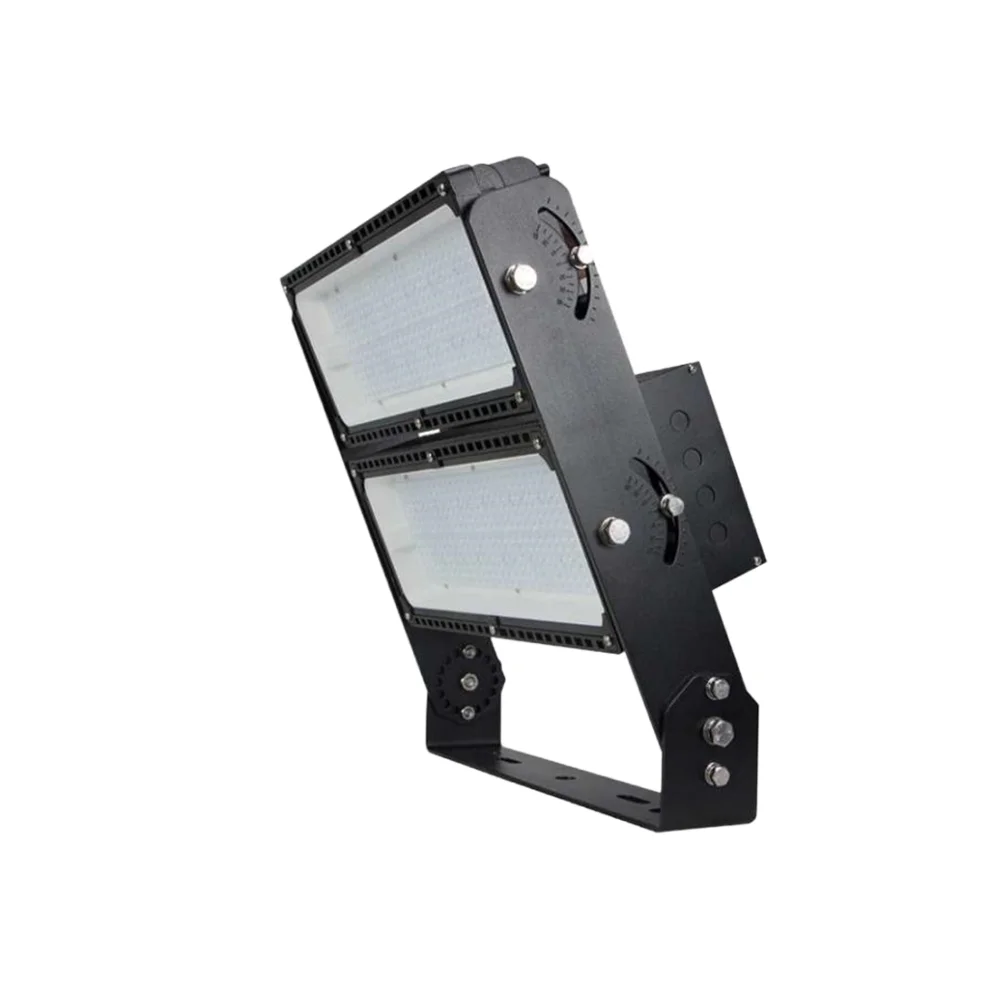
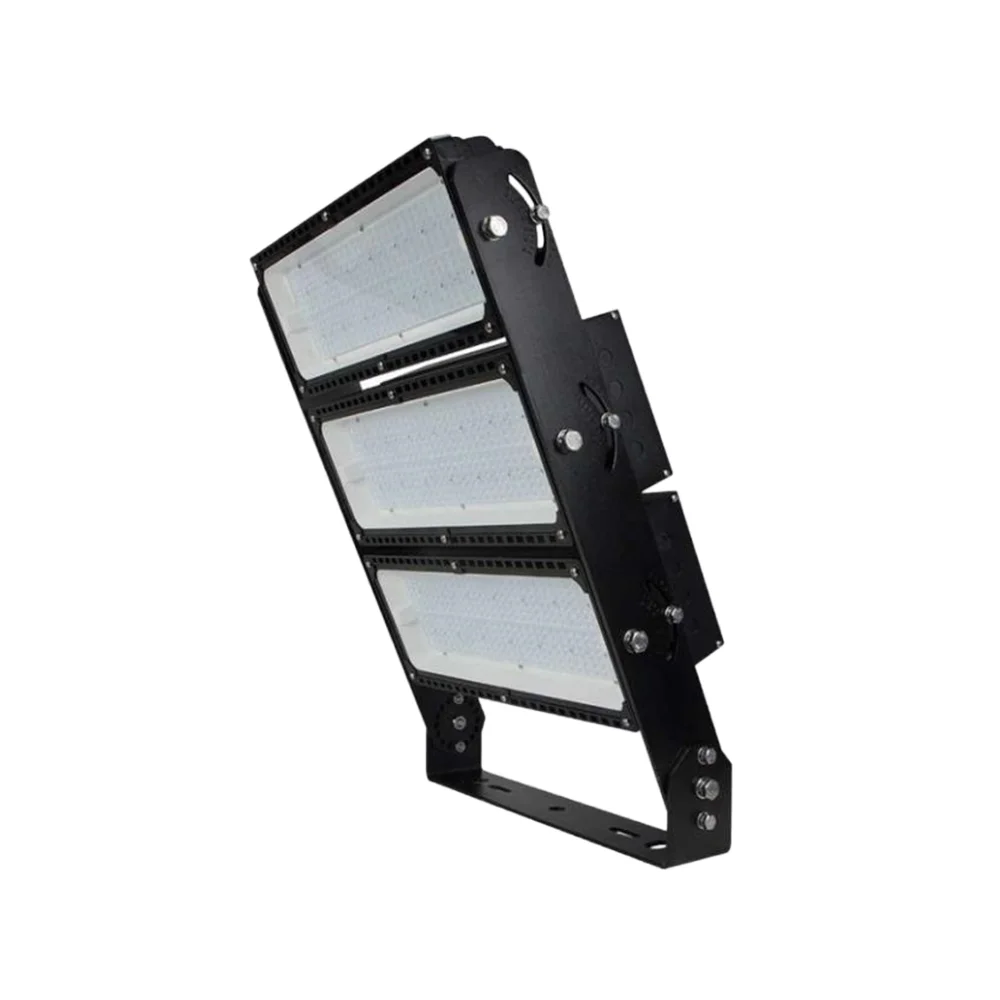
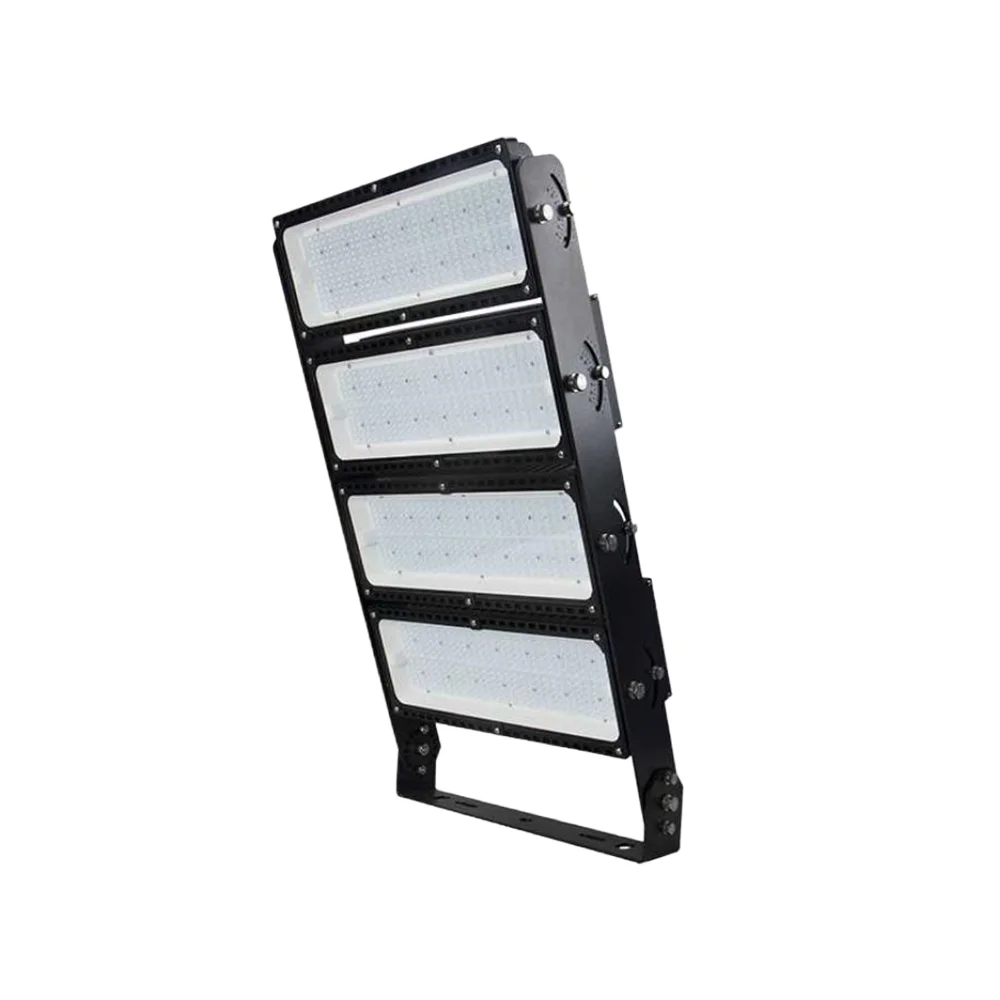
Conclusions
There are various dimensions of the baseball and softball fields where different levels of contests take place. Therefore, besides referring to the common standards and requirements for baseball field lighting, you also need a customized solution. Contact the experts at Casyoo for more advice on how to make your lighting plan as effective as possible!

